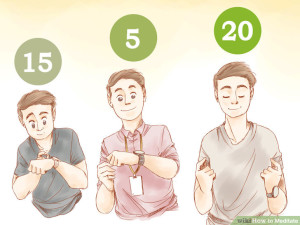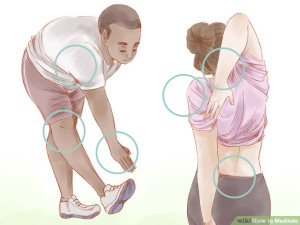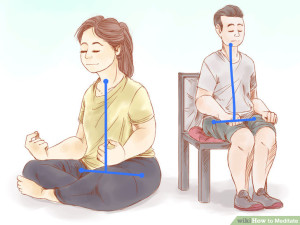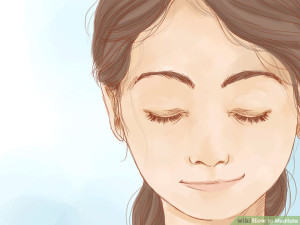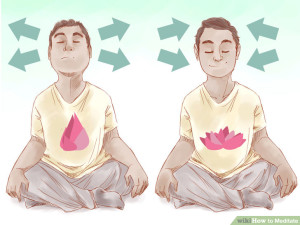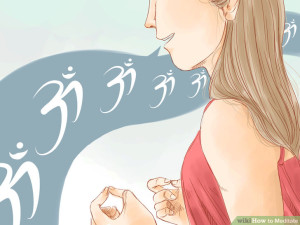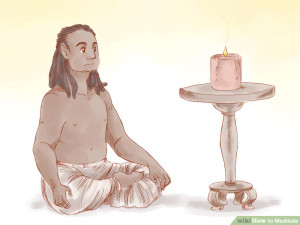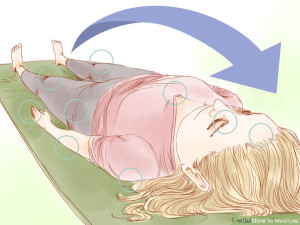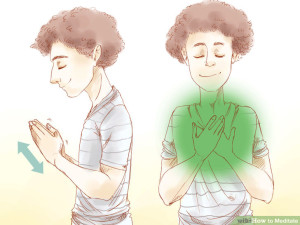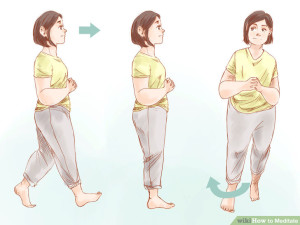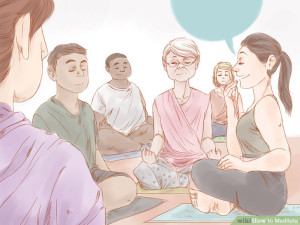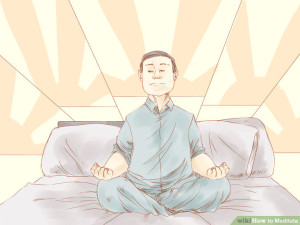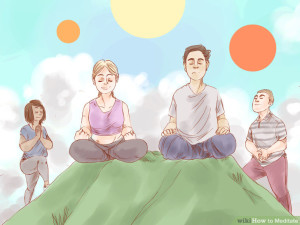How to Meditate
The goal of meditation is to focus and quiet your mind, eventually reaching a higher level of awareness and inner calm. It may come as a surprise to learn that you can meditate anywhere and at any time, allowing yourself to access a sense of tranquility and peace no matter what’s going on around you. This article will introduce you to the basics of meditation, enabling you to begin your journey on the path of enlightenment and bliss.
1. Choose a peaceful environment. Meditation should be practiced somewhere calming and peaceful. This will enable you to focus exclusively on the task at hand and avoid bombarding your mind with outside stimuli. Try to find a place where you will not be interrupted for the duration of your meditation – whether it lasts five minutes or half an hour. The space does not need to be very large – a walk-in closet or even your office can be used for meditation, as long as it’s somewhere private.
- For those new to meditation, it’s especially important to avoid any external distractions. Turn off TV sets, the phone or other noisy appliances. If you play music, choose calm, repetitive and gentle tunes, so as not to break your concentration. Another option is to turn on a small water fountain – the sound of running water can be extremely calming.
- Understand that the meditation space does not need to be completely silent, so there should be no need to reach for the earplugs. The sound of a lawnmower running or the dog barking next door shouldn’t prevent effective meditation. In fact, being aware of these noises but not letting them dominate your thoughts is an important component of successful meditation.
- Meditating outside works for many meditators. As long as you don’t sit near a busy roadway or another source of loud noise, you can find peace under a tree or sitting upon some lush grass in a favorite corner of the garden.
2. Wear comfortable clothes. One of the major goals of meditation is to calm the mind and block out external factors. This can be difficult if you feel physically uncomfortable due to tight or restrictive clothing. Try to wear loose clothing during meditation practice and make sure to remove your shoes.
- Wear a sweater or cardigan if you plan on meditating someplace cool. If you don’t, the sensation of being cold will consume your thoughts and you will be tempted to cut your practice short.
- If you are in the office, or somewhere that you can’t easily change your clothes, do your best to make yourself as comfortable as possible. Take off your shoes and jacket, open the collar of your shirt or blouse and remove your belt.
3. Decide how long you want to meditate. Before you begin, you should decide how long you are going to meditate. While many seasoned meditators recommend twenty minute sessions twice a day, beginners can start out doing as little as five minutes, once a day.
- You should also try to meditate at the same time each day – whether it’s 15 minutes first thing in the morning, or five minutes on your lunch hour. Whatever time you choose, try to make meditation an unshakable part of your daily routine.
- Once you have decided on a time frame, try to stick to it. Don’t just give up because you feel like it isn’t working – it will take time and practice to achieve successful meditation – right now, the most important thing is to keep trying.
- Although you will want to keep track of your meditation time, it is not beneficial to be constantly checking your watch. Think about setting a gentle alarm to alert you when your practice is up, or time your practice to end with a certain event – such as your partner getting out of bed, or the sun hitting a certain spot on the wall.
4. Stretch out. Meditation involves sitting in one spot for a certain period of time, so it is important to minimize any tension or tightness before you begin. Doing a couple of minutes of light stretching can really help to loosen you up and prepare both your body and mind for meditation. It will also prevent you from focusing on any sore spots instead of relaxing your mind.
- Remember to stretch your neck and shoulders, especially if you’ve been sitting in front of a computer, and don’t forget your lower back. Stretching out your legs, particularly those on the inner thigh, can be helpful when meditating in the lotus position.
- More information on specific stretching techniques can be found here.
5. Sit in a comfortable position. As stated above, it is very important that you are comfortable while you meditate, which is why finding the best position for you is essential. Traditionally, meditation is practiced by sitting on a cushion on the ground, in alotus, or half-lotus position. Unless your legs, hips, and low back are very flexible, lotus postures tend to bow your low back and prevent you from balancing your torso around your spine. Choose a posture that allows you to be balanced tall and straight.
-
- However, you can also sit without crossing your legs, on a cushion, chair, or meditation bench. Your pelvis needs to be tilted forwards enough for your spine to be centered over the two bony bits in your butt, the spots that bear your weight. To tilt your pelvis into the right position, sit on the forward edge of a thick cushion, or place something about 3 or 4 inches (7.6 or 10.2 cm) thick under the back legs of a chair. Meditation benches are usually built with a tilted seat. If not, put something under it to tilt it forward between a half inch and an inch.
- The most important thing is that you are comfortable, relaxed, and your torso is balanced so that your spine supports all of your weight from the waist up.
- Tilt your pelvis forward. Then, starting from your bottom, stack up the vertebrae in your spine, so that they are balanced one on top of another and support the whole weight of your torso, neck, and head. It requires practice to find the position that allows you to relax your whole torso almost completely, only slight effort being used to maintain your balance. Whenever you feel tension, relax the area. If you can’t relax it without slumping, check the alignment of your posture and seek to re-balance your torso so that area can relax.
- The traditional hand placement involves resting your hands in your lap, palms facing upward, with your right hand on top of your left. However, your can also just rest your hands on your knees or leave them hanging down by your side – whichever you prefer.
- Once you have grown accustomed to meditation, you can try practicing with your eyes open. This can be helpful if you find you are either falling asleep or concentrating too hard with your eyes closed, or if you are experiencing disturbing mental images (which happens to a small proportion of people).[1]
- When your keep your eyes open, you will need to keep them “soft” – that is, not focused on anything in particular. However, you don’t want to go into a trance-like state either – the goal is to feel relaxed but alert.[2]
Meditation Practices
- Try to focus on your breathing and only your breathing. Don’t think about your breathing or pass any sort of judgment of it (e.g. that breath was shorter than the last one), just attempt to know it and be aware of it.[1]
- Some mental images which might help you include: imagining a coin sitting on the spot above your navel, rising and falling with your breath; imagining a buoy floating in the ocean, bobbing up and down with the swell and lull of your breathing; or imagining a lotus flower sitting in your belly, unfurling its petals with every intake of breath.
- Don’t worry if your mind starts to wander – you are a beginner and, like anything, becoming good at meditation takes practice. Just make an effort to refocus your mind on your breathing and try to think of nothing else. Drown out the chatter and attempt to clear your mind
- To meditate, you must focus on one thing maximum
- If you’re a beginner, it might help to focus on one thing, like a mantra or visual object. More advanced meditators may try to clear their minds completely.
9. Repeat a mantra.Mantra meditation is another common form of meditation, which involves repeating a mantra (a sound, word or phrase) over and over, until you silence the mind and enter a deep meditative state. The mantra can be anything you choose, as long as it is easy to remember.
- Some good mantras to start out with include words like one, peace, calm, tranquil, and silence. If you want to use more traditional mantras, you can use the word “Om” which symbolizes omnipresent consciousness, or the phrase “Sat, Chit, Ananda” which means “Existence, Consciousness, Bliss”.
- In Sanskrit, the word mantra means “instrument of the mind”. The mantra is an instrument which creates vibrations in the mind, allowing you to disconnect from your thoughts and enter a deeper state of consciousness.
- Silently repeat the mantra over and over to yourself as you meditate, allowing the word or phrase to whisper through your mind. Don’t worry if your mind wanders off, just refocus your attention and return to repeating the word.[3]
- As you enter a deeper level of awareness and consciousness, it may become unnecessary to continue repeating the mantra.
- The visual object can be anything you wish, though many people find the flame of a lit candle particularly pleasant. Other possible objects include crystals, flowers, and pictures or statues of divine beings, such as the Buddha.
- Place the object at eye level, so you don’t need to strain your head and neck to view it. Gaze at it and nothing else, until your peripheral vision starts to dim and the object consumes your vision.
- Once you are focused entirely on the object, with no other stimuli reaching your brain, you should feel a sense of profound serenity.[4]
- The place you visualize could be a warm, sandy beach, a flower-filled meadow, a quiet forest or even a comfortable sitting room with a roaring fire. Whatever place you choose, allow it to be your sanctuary.
- Once you have entered your sanctuary, allow yourself to explore. There’s no need to “create” your surroundings, they are already there. Allow them to come to the forefront of your mind.
- Take in the sights, sounds and scents of your surroundings – feel the fresh breeze against your face, or the heat of the flames warming your body. Enjoy the space for as long as you wish, allowing it to naturally expand and become more tangible. When you are ready to leave, take a few deep breaths, then open your eyes.
- Know that you can come back to this same place the next time you meditate to visualization, or you can simply create a new space. Any space you create will be unique to you and a reflection of your individual personality.
- Close your eyes and pick a starting point on your body, usually the toes. Concentrate on whatever sensations you can feel in your toes, and make a conscious effort to relax any contracted muscles and release any tension or tightness. Once the toes are fully relaxed, move on to your feet and repeat the relaxation process.
- Continue along your body, moving upwards from your feet to your calves, knees, thighs, buttocks, hips, abdomen, chest, back, shoulders, arms, hands, fingers, neck, face, ears and top of your head. Take as long as you want.
- Once you have completed the relaxation of each individual body part, focus on your body as a whole and enjoy the sensation of calmness and looseness you have achieved. Focus on your breathing for several minutes before coming out of your meditation practice.
- To begin, close your eyes and rub the palms of your hands together to create warmth and energy. Then, place your right hand on the center of your chest, over your heart chakra, and place the left hand on top.
- Take a deep breath and as you exhale, say the word “yam”, which is the vibration associated with the heart chakra. As you do this, imagine a glowing green energy radiating from your chest and into your palms.
- This green energy is love, life and whatever other positive emotions you are feeling at that moment. When you are ready, take your hands from your chest and allow the energy to escape from your palms, sending your love to your loved ones and the world.
- Feel your body from the inside. Can you feel the energy field in your body, especially in your arms and legs? If you don’t feel it, it’s fine. But think: How are we able to move different parts of the body? It’s the energy field that flows in our body. Focusing your attention on that energy field will not only help you stay in the present but also will help you connect with your Being and flow of life in you.
- Choose a quiet location to practice your walking meditation, with as few distractions as possible. The space doesn’t need to be very large, but you should be able to walk at least seven paces in a straight line before needing to turn around. Remove your shoes, if possible.
- Holding your head up with your gaze directed straight ahead, and your hands clasped together in front of you. Take a slow, deliberate step with your right foot. Forget about any sensations or feelings in the foot and try to concentrate on the movement itself. After taking the first step, stop for a moment before taking the next. Only one foot should be moving at any given time.
- When you reach the end of your walking path, stop completely, with your feet together. Then, pivot on the right foot and turn around. Continue walking in the opposite direction, using the same slow, deliberate movements as before.
- While practicing walking meditation, try to focus on the movement of the feet and nothing else, in the same way that you focus on the rising and falling of your breath during breathing meditation. Try to clear your mind and become aware of the connection between your foot and the earth below.[1]
Meditating in Everyday Life
14. Practice mindfulness in your everyday life. Meditation doesn’t have to be limited to strictly defined practice sessions, you can also practice mindfulness throughout your day to day life.
- For example, in moments of stress, try to take a few seconds to focus solely on your breathing and empty your mind of any negative thoughts or emotions.
- You can also practice mindfulness while you eat, becoming aware of the food and of the sensations you experience as you eat.
- No matter what actions you perform in your day to day life, whether it’s sitting at a computer or sweeping the floor, try to become more aware of your body’s movements and how you feel in the present moment. This is living mindfully.[5]
- Some good books to start with include A Profound Mind: Cultivating Wisdom in Everyday Life by the Dalai Lama, The Nature of Personal Reality by Jane Roberts, “A New Earth” by Eckhart tolle and One-Minute Mindfulness by Donald Altman.
- If you wish, you can pick out any nuggets of wisdom that resonate with you from any spiritual or sacred texts and reflect on them during your next meditation session.
17. Take a guided meditation class. If you are unsure about where to begin when it comes to meditating at home, it may be a good idea to take a guided meditation class with an experienced teacher first.
- Meditation classes exist for most types of meditation, but you could also try going on a spiritual retreat where you will get a chance to sample different types of meditation and find out what works best for you.
- Early in the morning is a good time to meditate, before your mind becomes consumed with the stresses and worries of the day.
- It is not a good idea to meditate directly after eating though, as you may feel uncomfortable and this will interfere with your concentration.
19. Understand that meditation is a journey. The purpose of meditation is to calm the mind, achieve inner peace and, eventually, reach a higher spiritual dimension, often referred to simply as being.
- However, it is important to realize that it may take years of practice to achieve the level of awareness or higher consciousness experienced by yogis and monks. This does not matter.
- Meditation is a journey, akin to climbing a mountain, where every step along the path of enlightenment brings you closer to the summit.
- When starting off, you shouldn’t be too concerned with the quality of the meditation itself. As long as you feel calmer, happier and more at peace at the end of your practice, you will know that your meditation was successful.[7]


